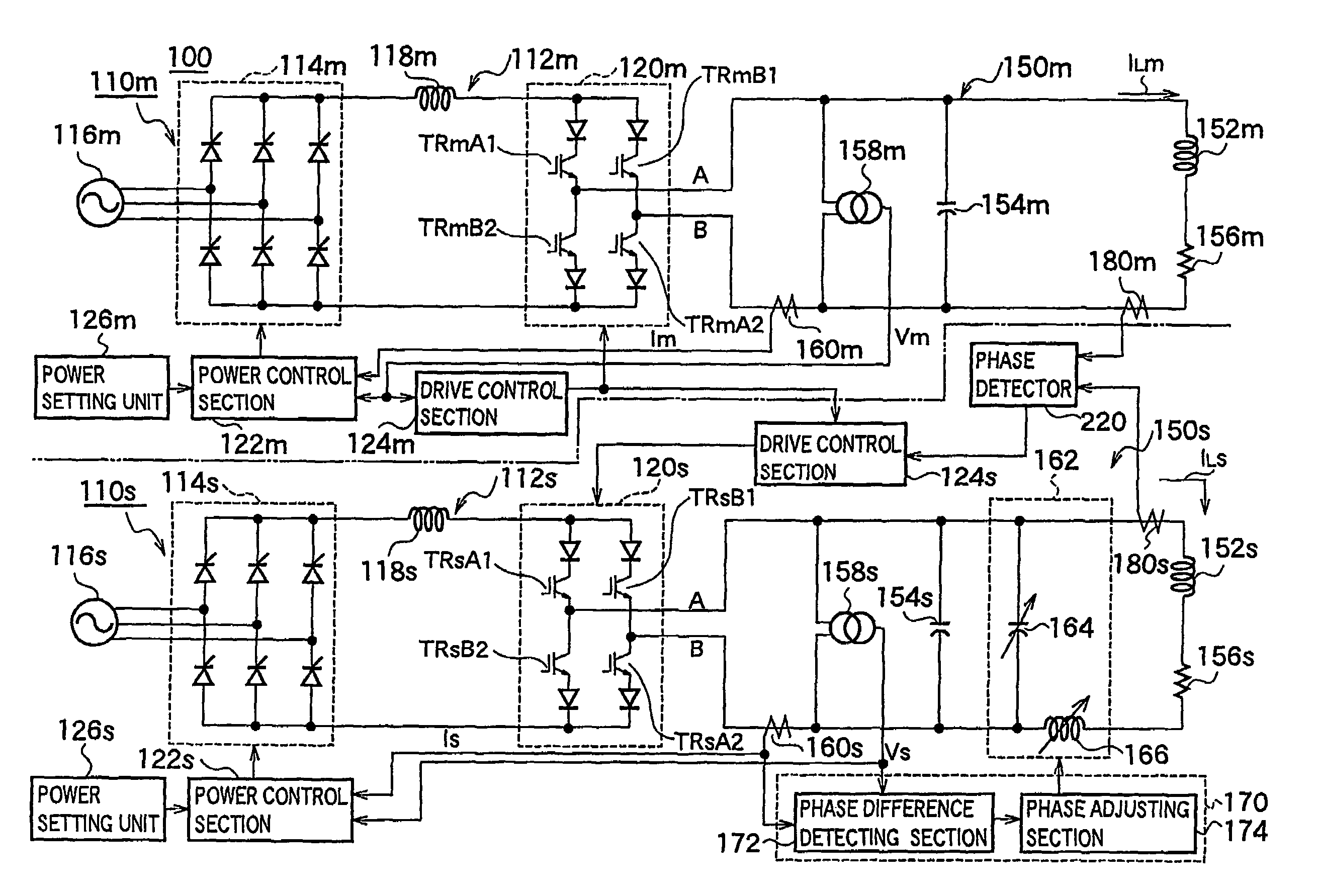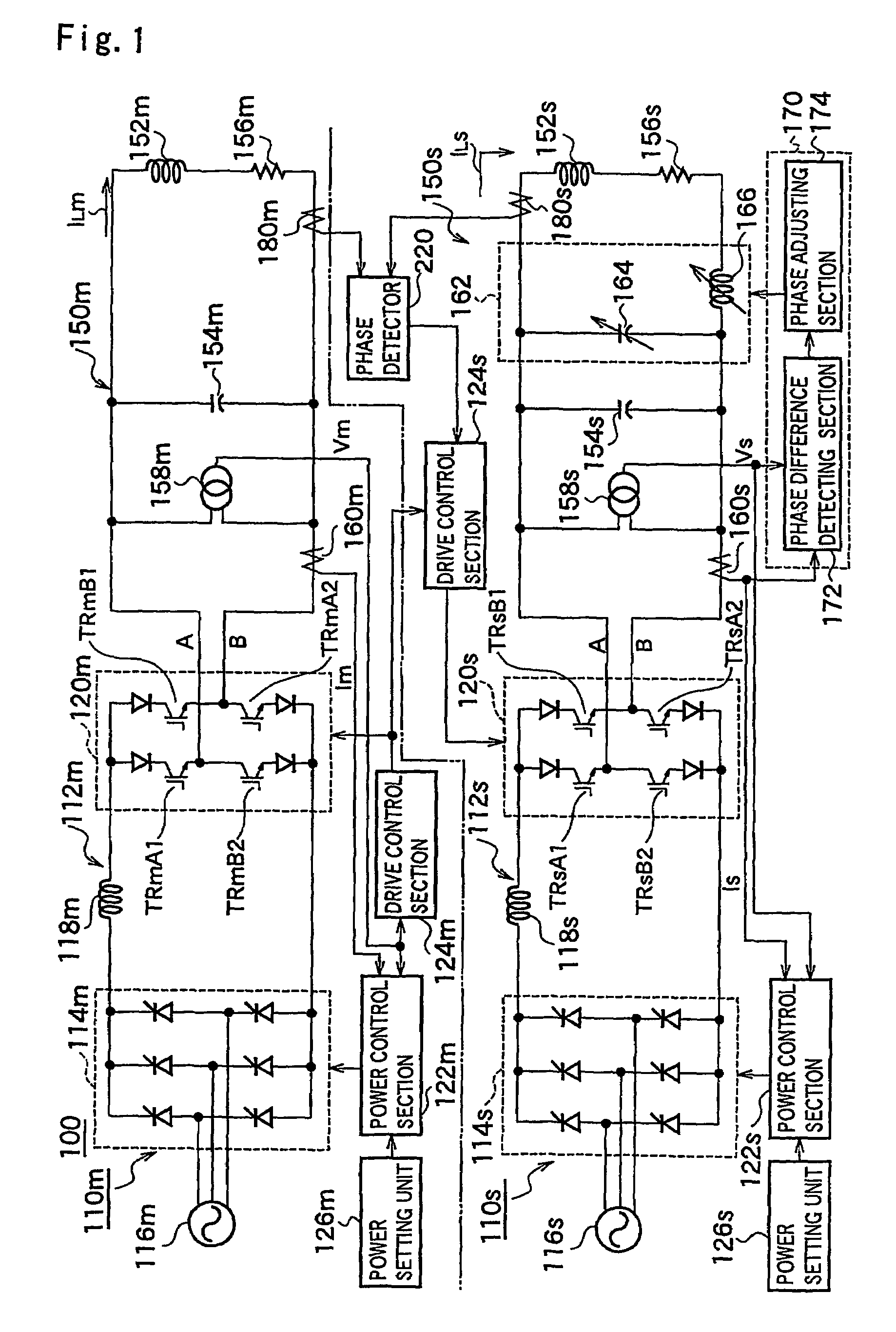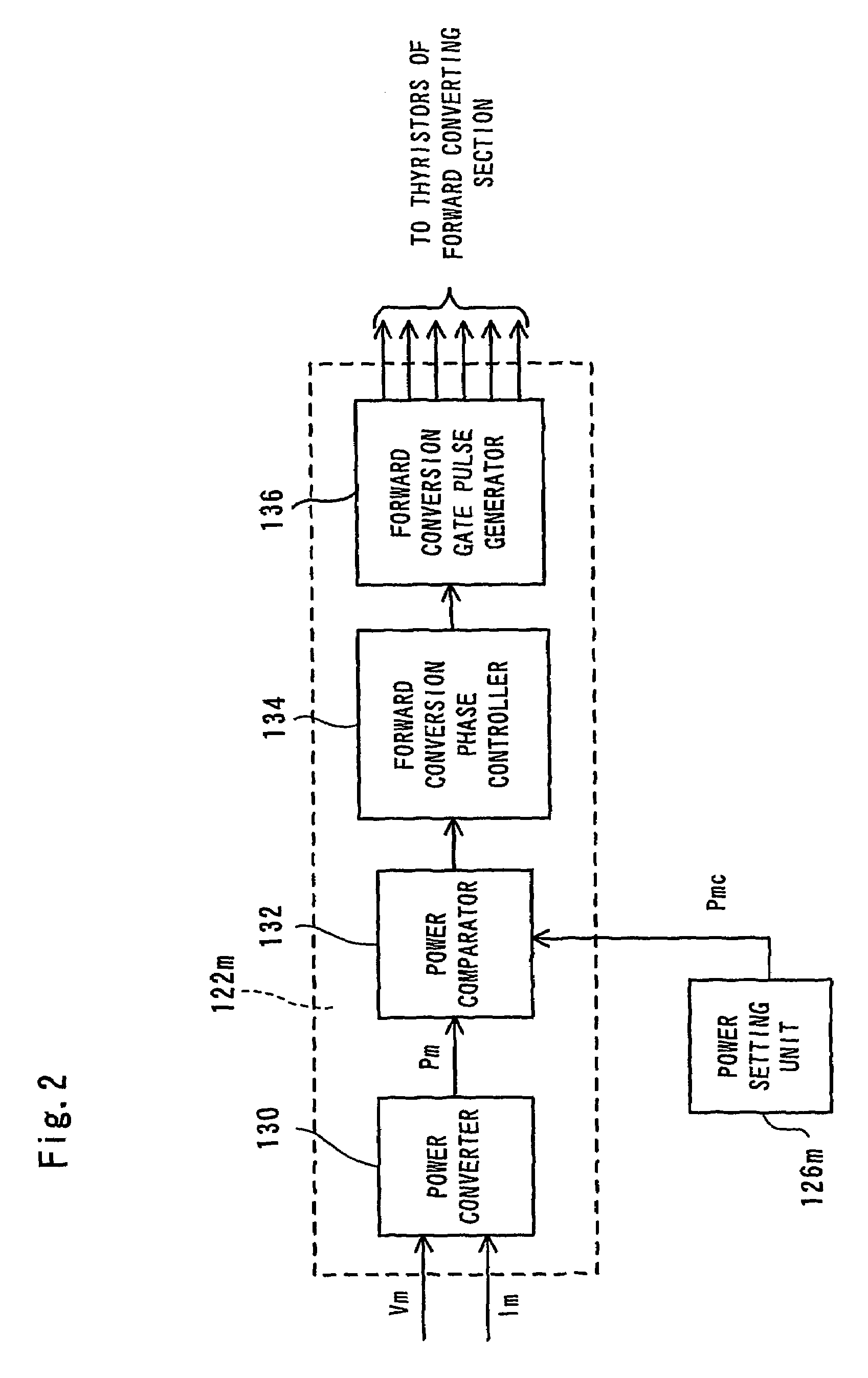Induction heating method and unit
a technology of induction heating and heating coils, applied in the direction of induction current sources, electric/magnetic/electromagnetic heating, coil arrangements, etc., can solve the problems of inability to achieve uniform heating, difficult high-precision control of heating temperature, and so as to achieve precise temperature control, improve power factor, and avoid temperature decrease in the border portion of the heating coils
- Summary
- Abstract
- Description
- Claims
- Application Information
AI Technical Summary
Benefits of technology
Problems solved by technology
Method used
Image
Examples
first embodiment
[0049]FIG. 1 is an explanatory view of an induction heating unit according to the present invention. An induction heating unit 100 according to this embodiment is composed of a pair of a main heating unit 110m and a subordinate heating unit 110s. The heating units 110m, 110s include power supply sections 112m, 112s and load coil sections 150m, 150s which are supplied with power from these power supply sections 112m, 112s, respectively.
[0050]The power supply sections 112m, 112s include forward converting sections 114m, 114s respectively, each being a rectifying circuit in which a bridge circuit is formed by thyristors, and these forward converting sections 114m, 114s are connected to three-phase AC power supplies 116m, 116s respectively. An inverter (inverse converting section) 120m and an inverter 120s are connected to output sides of the forward converting sections 114m, 114s via smoothing reactors 118m, 118s. In the embodiment, the inverter 120m on a main heating unit 110m side is...
second embodiment
[0072]In the second embodiment thus configured, the drive control section 212s on the subordinate side, when the voltage Vm on the main side is inputted thereto, detects a zero cross of the voltage Vm similarly to the drive control section 124m on the main side, generates a transistor gate pulse for A phase and a transistor gate pulse for B phase in synchronization with this zero cross, and gives them as drive signals to bases of respective transistors of the inverter 120s. Thereby, the same effect can be obtained as that in the above-described embodiment.
[0073]Incidentally, it is also suitable that a current Im outputted by a current transformer 160m on the main side is inputted to the drive control section 212s on the subordinate side, the transistor gate pulse is generated based on this current Im, this is given to the transistors of the inverter 120s on the subordinate side, and the inverter 120s on the subordinate side is operated in synchronization with the current Im on the m...
third embodiment
[0074]FIG. 14 is a diagrammatic explanatory view of a third embodiment, showing an example where the present invention is applied to a voltage-type inverter. In FIG. 14, an induction heating unit 300 is so configured that a forward converting section 304 is connected to an AC power supply 302 and a smoothing condenser 306 is provided on an output side of this forward converting section 304. Further, the induction heating unit 300 is so configured that a heating unit 310m on a main side and a heating unit 310s on a subordinate side are connected in parallel to the smoothing condenser 306.
[0075]The heating units 310m, 310s have DC power supply sections 312m, 312s, inverters 314m, 314s, and load coil sections 320m, 320s respectively. The DC power supply sections 312m, 312s are composed of generally known chopper circuits 316m, 316s and condensers 318m, 318s provided on output sides thereof. Each of arms of each of the inverters 314m, 314s is constituted by a bridge circuit which is com...
PUM
 Login to View More
Login to View More Abstract
Description
Claims
Application Information
 Login to View More
Login to View More - R&D
- Intellectual Property
- Life Sciences
- Materials
- Tech Scout
- Unparalleled Data Quality
- Higher Quality Content
- 60% Fewer Hallucinations
Browse by: Latest US Patents, China's latest patents, Technical Efficacy Thesaurus, Application Domain, Technology Topic, Popular Technical Reports.
© 2025 PatSnap. All rights reserved.Legal|Privacy policy|Modern Slavery Act Transparency Statement|Sitemap|About US| Contact US: help@patsnap.com



